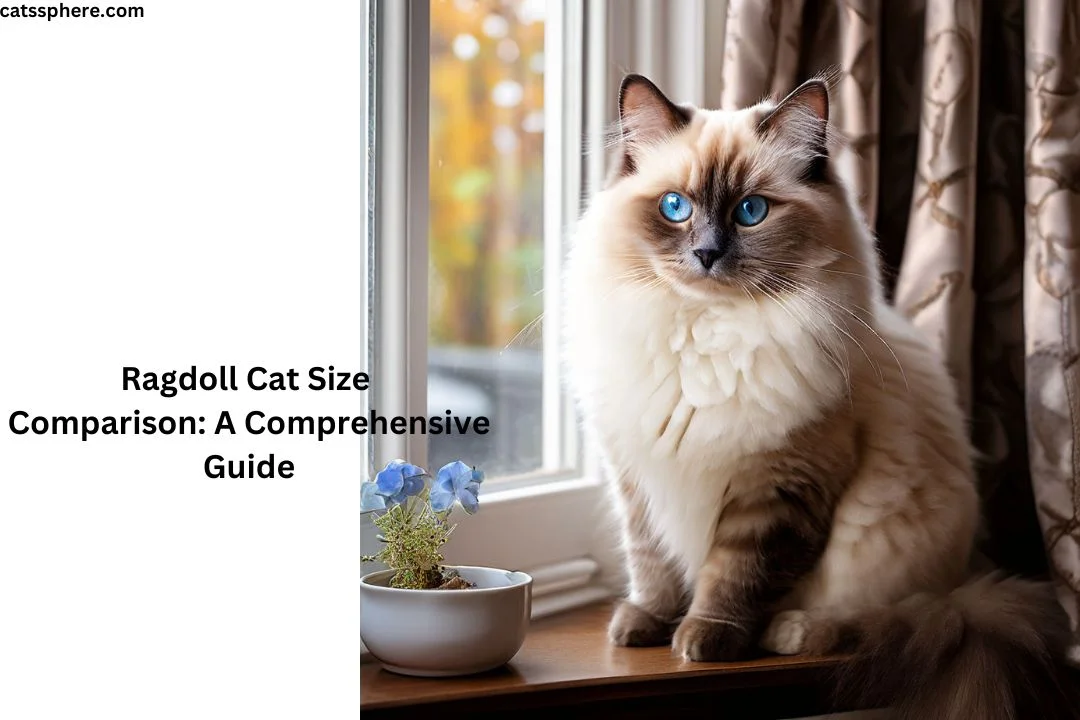Introduction
Ragdoll cats, with their striking blue eyes and luxurious coats, are one of the most beloved cat breeds. Known for their docile and affectionate nature, these gentle giants have captured the hearts of many cat enthusiasts. But just how big do Ragdoll cats get and Ragdoll Cat Size Comparison with other breeds? Understanding the size of Ragdoll cats is crucial for potential owners to ensure they can provide the appropriate care and living environment for these magnificent felines.
History of Ragdoll Cats
Origins and Development
Ragdoll cats originated in the 1960s in Riverside, California, thanks to a breeder named Ann Baker. She developed the breed from free-roaming cats, selecting for their docile temperament and striking appearance. The breed’s name, “Ragdoll,” comes from their tendency to go limp and relaxed when picked up, much like a child’s ragdoll toy.
Characteristics of Ragdoll Cats
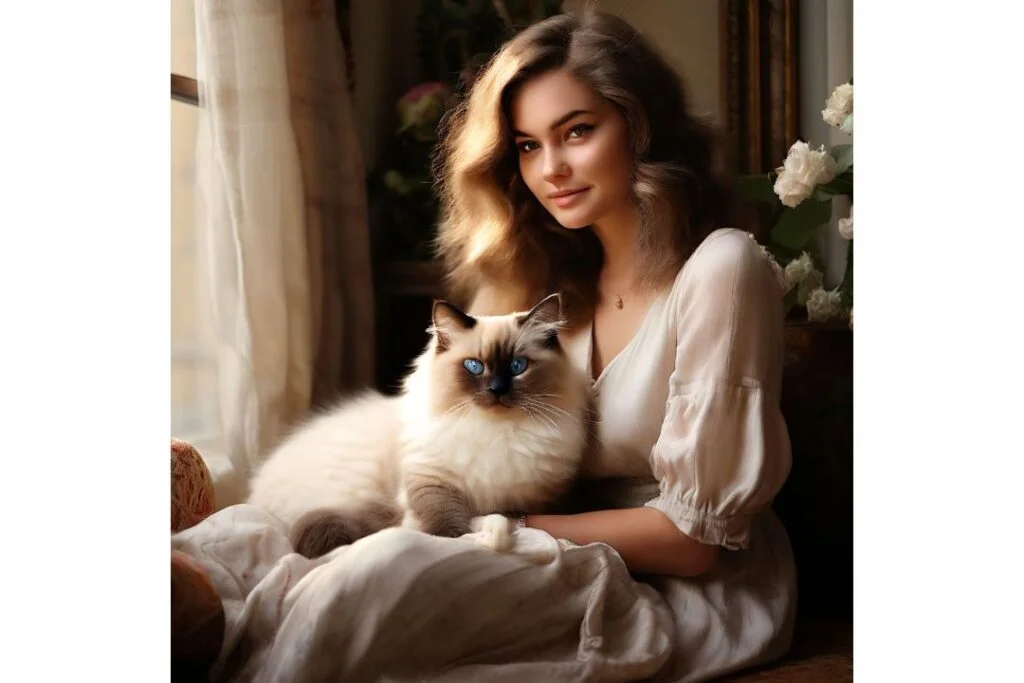
Ragdolls are known for their friendly and laid-back demeanor. They are often described as “puppy-like” because of their tendency to follow their owners around and their eagerness to be involved in family activities. Their calm nature makes them excellent companions for families and individuals alike.
Physical Characteristics of Ragdoll Cats
Coat and Color Patterns
Ragdoll cats boast semi-longhair coats that are soft and silky. They come in a variety of color patterns, including colorpoint, mitted, and bicolor. The color palette includes shades like seal, blue, chocolate, and lilac, among others.
Eye Color
One of the most captivating features of Ragdoll cats is their large, blue eyes. This eye color is a hallmark of the breed and adds to their overall striking appearance.
Average Size of Ragdoll Cats
Weight Range
Ragdoll cats are among the larger domestic cat breeds. On average, male Ragdolls weigh between 15 to 20 pounds, while females are slightly smaller, typically weighing between 10 to 15 pounds. However, some males can exceed 20 pounds, particularly if they come from large-breed lines.
Height and Length
In terms of height, Ragdolls stand about 9 to 11 inches at the shoulder. Their body length, including the tail, can range from 17 to 21 inches, making them one of the longest cat breeds as well.
Size Comparison with Other Cat Breeds
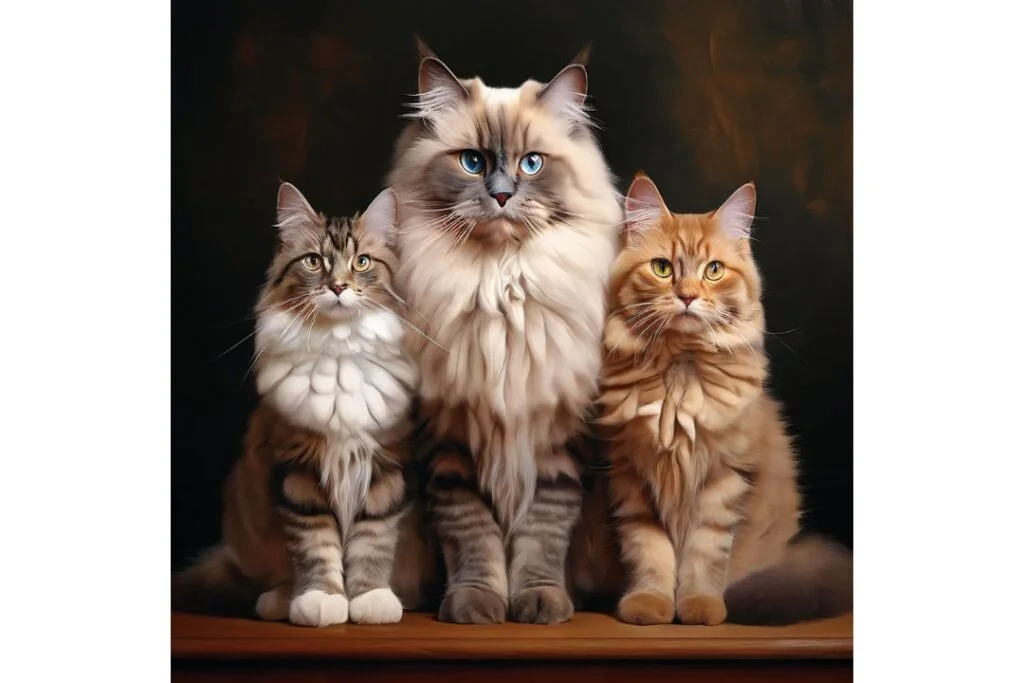
Maine Coon
Maine Coons are often compared to Ragdolls due to their similar size and friendly nature. Maine Coons are generally larger, with males weighing up to 25 pounds and females up to 18 pounds.
Norwegian Forest Cat
Norwegian Forest Cats are another large breed. Males typically weigh between 12 to 20 pounds, while females range from 8 to 18 pounds. They are similar in size to Ragdolls but tend to have a more robust build.
British Shorthair
British Shorthairs are stocky and muscular, with males weighing 9 to 17 pounds and females 7 to 12 pounds. While they are hefty, they are generally shorter in length compared to Ragdolls.
Siamese
Siamese cats are much smaller than Ragdolls, with males weighing 8 to 15 pounds and females 6 to 10 pounds. They are slender and sleek, in stark contrast to the plush and large-bodied Ragdolls.
Factors Influencing Ragdoll Cat Size
Genetics
Genetics play a crucial role in determining the size of a Ragdoll cat. Lineage and breeding practices significantly impact their final size, with some lines producing consistently larger cats.
Nutrition
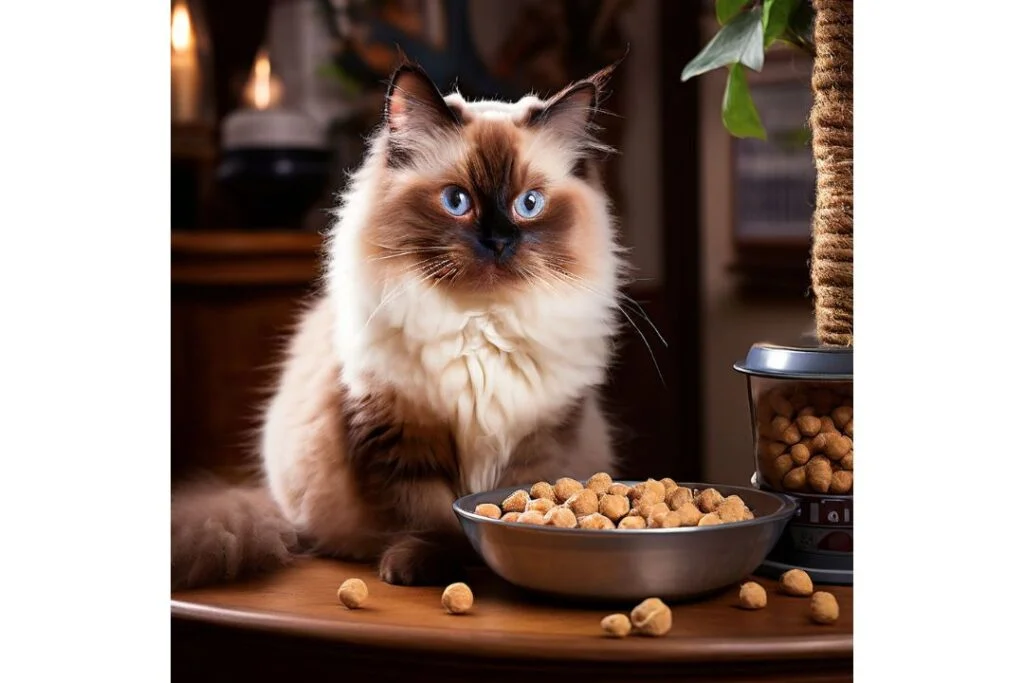
Proper nutrition is essential for the growth and development of Ragdoll cats. A diet rich in high-quality proteins and essential nutrients supports healthy weight gain and overall growth.
Health
Health issues can also affect a Ragdoll’s size. Conditions such as hyperthyroidism or obesity can lead to weight fluctuations that deviate from the breed’s typical size range.
Growth Stages of Ragdoll Cats
Kitten Stage
Ragdoll kittens grow rapidly during their first year. By six months, they typically weigh between 5 to 9 pounds. Their growth rate is influenced by their diet, genetics, and overall health.
Adolescent Stage
During the adolescent stage, which lasts from about one to three years, Ragdolls continue to grow, though at a slower pace. They begin to fill out and develop their full coat.
Adult Stage
Ragdolls reach their full size around three to four years of age. Males are generally larger than females, but both sexes exhibit the breed’s characteristic large size and fluffy coat.
Gender Differences in Size
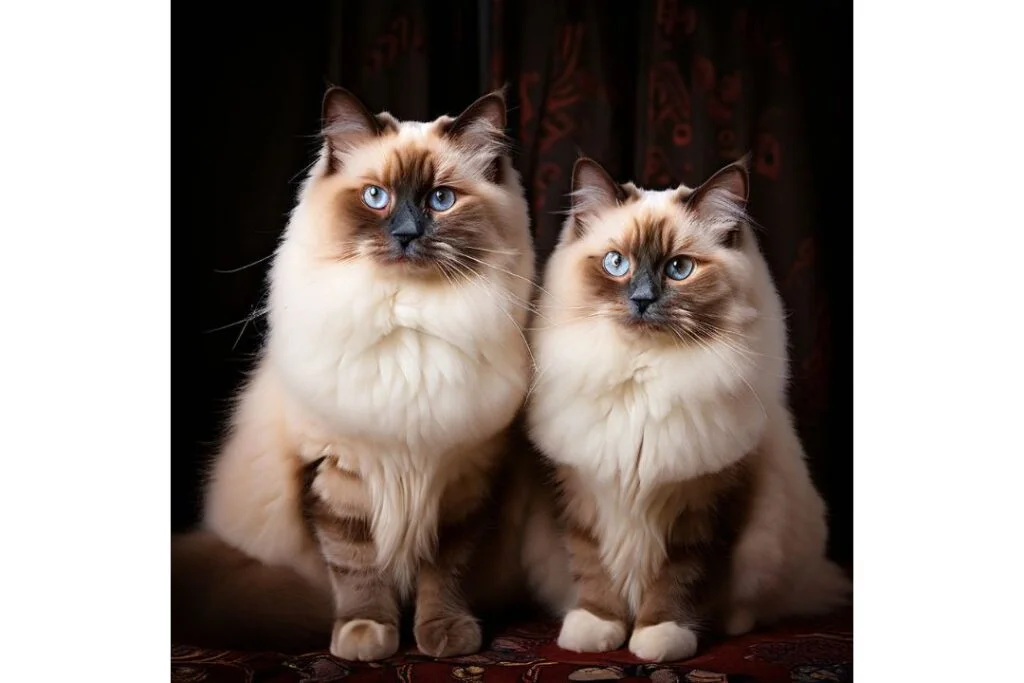
Male Ragdoll Cats
Male Ragdolls are typically larger and more robust than females. They can weigh anywhere from 15 to over 20 pounds and tend to have a more muscular build.
Female Ragdoll Cats
Female Ragdolls, while still large compared to other breeds, are usually smaller than males, weighing between 10 to 15 pounds. They have a more slender build but retain the breed’s signature fluffiness.
Ragdoll Cat Size Chart
| Age | Weight Range (Males) | Weight Range (Females) |
| 3 months | 3-4 lbs | 2-3 lbs |
| 6 months | 5-9 lbs | 4-6 lbs |
| 1 year | 10-15 lbs | 8-12 lbs |
| 3-4 years | 15-20+ lbs | 10-15 lbs |
Caring for Large Ragdoll Cats
Diet and Nutrition
Large Ragdolls require a diet that supports their size. High-quality cat food with ample protein is essential. It’s important to monitor their weight and adjust their diet to prevent obesity.
Exercise Needs
Despite their laid-back nature, Ragdolls need regular exercise to maintain a healthy weight. Interactive toys, climbing trees, and regular playtime can help keep them active and engaged.
Grooming Tips
Ragdolls have semi-longhair coats that require regular grooming to prevent matting and tangles. Brushing them several times a week will keep their coat in good condition and reduce shedding.
Health Considerations for Large Cats
Common Health Issues
Large cats like Ragdolls are prone to certain health issues, including heart disease, kidney problems, and obesity. Regular veterinary check-ups are crucial to catch and manage any potential health problems early.
Preventative Measures
Maintaining a healthy diet, ensuring regular exercise, and providing routine veterinary care are key preventative measures to keep your Ragdoll cat healthy. Regular grooming also helps in monitoring their overall health.
Living Space Requirements
Ideal Home Environment
Ragdoll cats adapt well to various living environments, but they thrive in homes where they have space to move around. They enjoy lounging but also need room to play and explore.
Space for Play and Exercise
Providing climbing structures, scratching posts, and interactive toys will help ensure your Ragdoll gets enough exercise. An enriched environment prevents boredom and promotes physical health.
Ragdoll Cats as Family Pets
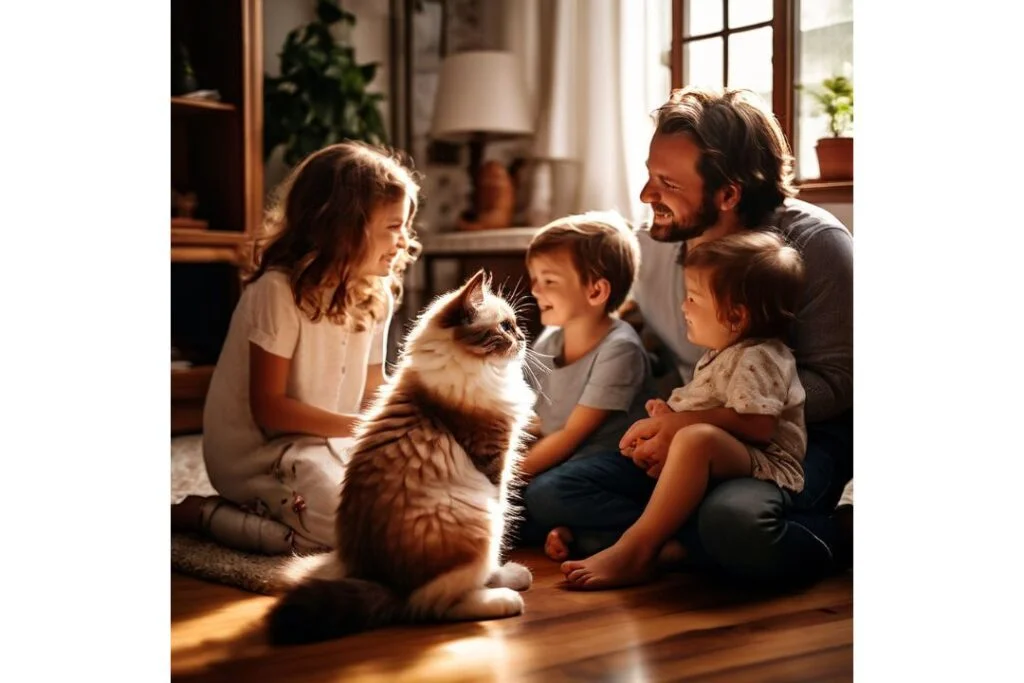
Temperament and Personality
Ragdolls are known for their gentle and affectionate nature. They are often described as “lap cats” and enjoy being around their human companions. Their calm demeanor makes them excellent pets for families with children.
Interaction with Children and Other Pets
Ragdolls generally get along well with children and other pets like dogs. Their patient and tolerant nature makes them a good fit for busy households, and they often form strong bonds with all family members.
Male Flame Point Ragdoll Cat (Detailed Guide 2024)
How to Identify a Ragdoll Cat (10 steps)
“Do Ragdoll Cats Drool? Understanding Feline Behavior”
Training and Socialization
Importance of Early Socialization
Socializing Ragdoll kittens from a young age helps them become well-adjusted adults. Exposing them to different people, pets, and environments builds their confidence and reduces anxiety.
Training Tips for Large Cats
Training Ragdolls can be a rewarding experience. Positive reinforcement techniques, such as treats and praise, work well. Basic commands, litter training, and appropriate scratching behavior are all achievable with consistent training.
Conclusion: Ragdoll Cat Size Comparison

Ragdoll cats are a delightful addition to any household, combining their impressive size with a gentle and loving nature. These cats are known for their docile temperament and affectionate behavior, making them perfect companions for families and individuals alike. Understanding the size and specific needs of Ragdoll cats is essential for providing the best care and ensuring their well-being. Whether you’re considering adding a Ragdoll to your family or already have one, being knowledgeable about how to support their growth, health, and happiness will ensure a long and fulfilling companionship with these magnificent felines.
FAQs
How big do Ragdoll cats get?
Ragdoll cats are one of the larger domestic cat breeds. Males typically weigh between 15 to 20 pounds, with some reaching over 20 pounds. Females are slightly smaller, usually weighing between 10 to 15 pounds. Their substantial size adds to their plush and cuddly appearance.
Are male Ragdoll cats bigger than females?
Yes, male Ragdoll cats are generally larger than females. Males can weigh up to 20 pounds or more, while females usually weigh between 10 to 15 pounds. This size difference is due to genetic factors and is consistent with many other cat breeds where males are typically larger.
At what age do Ragdoll cats reach their full size?
Ragdoll cats typically reach their full size around three to four years of age. They continue to grow and fill out during this period, with males usually being larger than females. Their growth includes both an increase in weight and the development of their characteristic fluffy coat.
Do Ragdoll cats require a lot of space?
While Ragdoll cats are large, they adapt well to various living environments. However, they do appreciate having space to move around, play, and explore. Providing an enriched environment with climbing structures, scratching posts, and interactive toys is beneficial. These elements not only cater to their physical exercise needs but also help keep them mentally stimulated and happy.
Are Ragdoll cats good pets for families?
Absolutely! Ragdoll cats are known for their gentle and affectionate nature. They get along well with children and other pets, making them excellent family pets. Their patient and tolerant demeanor, combined with their desire for human interaction, means they often form strong bonds with all family members. This makes them a wonderful choice for households looking for a loving and loyal feline companion.

